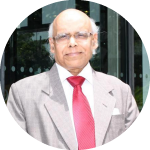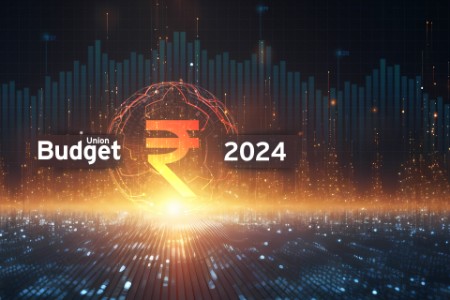Ragini Trehan: Welcome to the EY India Insights podcast. I am your host, Ragini. In this episode of Budget Insights series, we will discuss the macroeconomic expectations from the forthcoming Union Budget for 2024-25, along with the policy priorities of the government for the next two to three years. To facilitate this discussion, we are joined by Dr. D. K. Srivastava, a distinguished economist, member of the Advisory Council to the 16th Finance Commission, and EY India's chief policy advisor.
A very warm welcome Dr. D. K. Srivastava.
Dr D. K. Srivastava: Thank you Ragini.
So let us kick off by understanding the prospects for government tax revenues. GoI's tax-GDP ratio has increased from 10% in FY20 to 11.7% in FY24. Do you expect this trend to continue in the medium term?
Dr D. K. Srivastava: Well, this increase was mostly based on an improved buoyancy of direct taxes. In fact, in the case of personal income tax, the buoyancy was at 2.6 in FY24, which is quite unprecedented, and for corporate income tax, which had undergone major reforms recently, the buoyancy had picked up to 1.1. Together, the direct taxes buoyancy is 1.8, and for gross taxes as a whole, this buoyancy is 1.4. I expect that the gross tax buoyancy may continue at this level, or at least tangibly above 1 for several years.
As long as it remains above 1, we expect the tax-GDP ratio of Government of India to continue to increase. This will benefit both the central government and state governments because these tax revenues are shared between the two tiers of government. There is a possibility of improvement also in indirect taxes, in the sense that, the Union excise duties are largely specific and they have been showing contraction in recent years. There is some scope to turn them around and make them ad valorem, such that they make a positive contribution when prices go up, particularly for petroleum products. There is some scope also of revising customs duties. As the global economy recovers, there can be some higher growth in customs duties and thus indirect taxes. GST has been performing rather well recently, and the buoyancy of GST is also higher than 1 at 1.3 in FY24.
So my expectation is that the GoI’s tax-GDP ratio will continue to increase and might cross 12% in FY25.
Ragini Trehan: Thank you so much for your thoughtful Insights. Moving on to the expenditure prospects, during FY22 to FY24, GoI had suppressed growth in its revenue expenditure in the range of 1.2% to 7.8%, particularly by reducing subsidies. Sir, can this trend continue in the light of calls for providing relief to rural population?
Dr D. K. Srivastava: Well, I think that some of the available signals indicate that the rural distress might be responded to by the Union government and there might be some emphasis on investment in rural areas and for increasing employment prospects in the rural areas. Given that, we expect several initiatives for providing relief, which might involve additional revenue expenditure. So, the revenue expenditure growth, which continued to be subdued in recent times, might have to be relaxed. And my expectation is that it might be 8% or more, which might then be used to accommodate some expansion of the Mahatma Gandhi National Rural Employment Act (MG NREGA) allocations and increase in food subsidies. Alongside, there is an expectation that an increase in the PM-Kisan Samman Nidhi might be on cards because several calls are being made that the farmers are in distress and they need to be supported more solidly and more regularly. If the amount is increased to INR1000 per month for registered farmers in this scheme, the burden of PM-Kisan Samman Nidhi will become twice — from 6000 per annum per farmer to 12,000 per annum per farmer.
There were also announcements regarding the expansion of the PM Awas yojana for construction of rural houses. This will generate not only employment within the rural areas, but also provide them with assets. There are other possibilities, such as making direct transfers per household in the name of the female house head or the senior most female member in the family.
If these programs are taken up, there is bound to be expansion in the growth rate for revenue expenditure. At the same time, it is critical that government continues to maintain a high growth of capital expenditure because that is the main driver of overall GDP growth. So there has to be a balancing act between augmenting revenue expenditure and maintaining capital expenditure growth at a suitably high rate. Luckily, I think, because of the tax revenue, and even the non-tax revenue where the government has benefited from increased RBI dividends, there would be adequate revenues for the government to accommodate some of these revenue expenditure increases.
Ragini Trehan: Thank you, sir, for explaining it so vividly. So, my last question for you is, do you expect a roadmap for fiscal consolidation in the forthcoming budget, reducing GoI’s fiscal deficit to GDP ratio to 3% in the next three to four years?
Dr D. K. Srivastava: Well, this is definitely on policymakers’ radar. And the FRBM target is 3% of GDP for the central government. Whether the finance minister would decide to specify 3% target in the forthcoming budget, we have to wait and see. But what I think is, this year that is, in FY25, we should be able to maintain a fiscal deficit of 5.1%. It would take only an adjustment of 0.5 percentage points per year to reach the 3% level in four years. So, it would not be out of alignment if they provide a roadmap for four years or continue with the three-year plan, they have been using. If they signal a willingness to adjust, it might require a 0.7 percentage points per year adjustment to reach the 3% target in three years.
My sense is that they will ensure that the signal is clear, given their commitment to fiscal consolidation. One benefit, as fiscal deficit to GDP ratio gets reduced, is the creation of additional space for sharing investible surplus available in the economy. When interest rates start to decrease, private investment will pick up.
Ragini Trehan: So, these are extremely useful perspectives. Thank you very much, Dr. D. K. Srivastava, for joining us in this session and providing us your invaluable Insights.
Dr D. K. Srivastava: Thank you, Ragini. Thank you very much.
Ragini Trehan: Thank you to all our listeners. Stay tuned for more captivating discussions on EY India Insights, do not forget to subscribe for the latest updates. Until next time, this is Ragini signing off.



